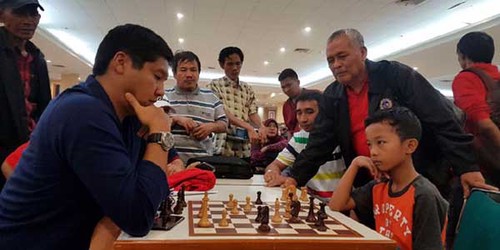If we talk about sports, surely what is in our shadow is an activity that is physical and draining, with movements that train certain muscles in the body. However, besides these physical sports, there are also several types of sports that do not require the culprit to move. One of the most popular in the world is chess.
Unlike most sports, in chess we don't train muscles, but the brain. Chess also requires players to think more sharply and one step ahead of their opponents but in a narrow time frame must decide the best steps to take to win the game. So no wonder, often the ability to play chess that is qualified is associated with a high level of intelligence and IQ.
Other articles:
Chess Sports History Rules and How to Play
Rules and Violations in Chess
History and Basic Techniques in Chess Games
Various types of Yoga Movement for Health
Types of Yoga and Explanations
In this article, we will talk about the history of the development of chess in the world to become a popular sport as we know it today and also some basic guidelines and useful tips for playing chess for those of you who are interested in trying it. Let's start.
Chess History
sources such as H. J. R. Murray, author of the History of Chess (1913), chess originated in India and began to exist in the 6th century. There chess is known as chaturanga, which means four separate elements. At first, chess pieces were only divided into four types, not six as they are today. This is in accordance with ancient Indian beliefs, which recognize the four essential elements of life, namely fire, air, soil and water. Classification of chess pieces in those days was adjusted to these beliefs so that it was considered as a symbol of human ways of life. In addition, in the game, chess relies on the analysis and sharpness of the player's brain, accompanied by strategic skills in determining steps, plans, risks, and determining when to sacrifice in order to win. These elements are also often found in various aspects of life so that this sport quickly gained a place in the hearts of the people of that era.
Murray's other opinion is also the opinion of Samuel Howard Sloan, a chess player, publisher and political figure from the United States who has studied chess history. According to Sloan, if chess was originally discovered in India, the game should appear in Sanskrit or Sanskrit literature. In fact, there was not a single Sanskrit literature in India before the 6th century which referred to the chess game. Furthermore, according to Sloan, poets in China on the contrary, have mentioned this game in their verses, 800 years before. So according to Sloan, the Bamboo Curtain Country was the place where chess and chessboard were from the time it was not square like now, but rather round. Meanwhile chess pieces are only divided into four types, namely kings, fortresses, ministers and horses.
Other articles:
Kinds of Running in Athletic Sports
History and Rules in Relay Run
Short-distance running technique
History and Rules in Golf Sports
Types of Sports for the Elderly and Benefits
Whichever source is right, one thing is clear, chess is only developing rapidly since it was brought by Muslims to all corners of the world, especially to the European continent through the Moors who conquered Spain in the 8th century. From Spain, then chess began to develop in other European countries such as Germany, Italy, the Netherlands (which then took it to our country Indonesia), England, Ireland and Russia. It was in these European countries that many chess games were modified and developed so that they gradually became like chess that we know today. Some of the changes made along with the changes in civilization included boxes on the chessboard that began in black and white since the 10th century, where before the boxes were the same color and the rule that pawns could advance two boxes in the first step and the queen could move more freely diagonally.
Recently, an archaeological team from the United Kingdom managed to find new clues about chess history from the excavations they carried out in the Byzantine kingdom area, which is now an area around Southern Albania. The expedition leader revealed that this discovery revealed new facts about chess, where the game had become popular in Europe since the 6th century, which meant that the sport might be around 500 years older than previously thought.

Comments